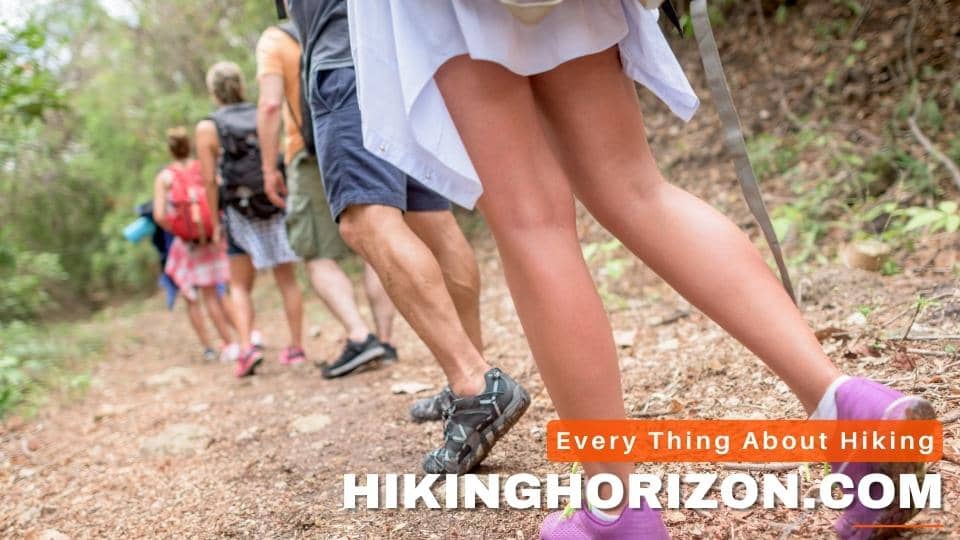
Yes, hiking can tone your legs. Hiking is a great way to strengthen and tone your muscles, especially your legs and glutes. Hiking provides resistance to help tone your leg muscles. The varied terrain and elevation changes during hikes challenge your leg muscles more than flat-surface walking or running.
As the popularity of hiking continues to grow, more and more people are taking to the trails to enjoy nature, de-stress, and get a good workout. A common question among new hikers and fitness enthusiasts is, does hiking tone legs? The answer is a resounding yes! Hiking is a fantastic way to tone your leg muscles while enjoying the outdoors.
Hiking engages various leg muscles, which can help create a more sculpted appearance. To understand why hiking is effective at toning legs, we first need to learn about the primary leg muscles, how they’re involved in the activity, and how to get maximum leg toning by hiking.
Table of Contents
Understanding Leg Muscles and Toning
Let’s look closer at the muscles that make up our legs and the difference between toning and bulking. It will help us better understand how hiking can lead to toned legs.
Key Leg Muscles
Our legs comprise several muscle groups that work together to help us move, balance, and support our body weight. Here are the four primary muscle groups involved in hiking:
1. Quadriceps
Your thighs have a bunch of big muscles on the front called the quadriceps. They’re called that because there are four muscles in that group. They play a significant role in helping you walk uphill and straighten your legs. So, when you go hiking, your quads work hard to push your legs up any inclines you encounter. It is excellent because it helps to tone and strengthen your quadriceps muscles!
The four muscles that make up the quadriceps are the rectus femoris, vastus lateralis, vastus intermedius, and vastus medialis. Each of these muscles has a specific function, and together they help you move your legs efficiently. For example, the rectus femoris is the muscle that gives your thigh its shape, while the vastus lateralis is the biggest of the quadriceps muscles and runs along the outside of your thigh.
Strong quadriceps can help to prevent knee injuries and improve your athletic performance. For instance, the vastus intermedius helps stabilize your knee joint, and the vastus medialis helps keep your knee joint in alignment. Top of Form
The three muscles that make up the hamstrings are the biceps femoris, semimembranosus, and semitendinosus. Each muscle has a specific function that helps your legs move efficiently. For example, the biceps femoris is the muscle that gives your thigh its shape, while the semitendinosus is located on the inside of your thigh and helps to stabilize your knee joint.
Strong hamstrings can help to prevent knee injuries and improve your athletic performance. For instance, the semimembranosus helps keep your knee joint in alignment.
3. Glutes
Your buttocks comprise a group of three muscles called the glutes. These muscles are essential in stabilizing your pelvis and hip joint as you walk. When you go hiking, your glutes work hard to keep your body stable as you navigate uneven terrain, which can help to tone and strengthen them!
Your backside comprises three muscles commonly referred to as the glutes. These muscles are called the gluteus maximus, medius, and minimus. Each muscle has a specific function that helps your body move efficiently. For example, the gluteus maximus is the biggest of the three muscles, giving your buttocks its shape. The medius is located on the sides of your hips and helps stabilize your pelvis.
Strong glutes can help to improve your posture and prevent lower back pain. The minimus, located on the inside of your hip, also helps stabilize your pelvis.
The two muscles comprising the calf muscles are the gastrocnemius and the soleus. Each muscle has a specific function that helps your feet move efficiently. For example, the gastrocnemius is the muscle that gives your calf its shape. The soleus is underneath the gastrocnemius and helps stabilize your ankle joint. Muscular calves can help to improve your balance and prevent ankle injuries.
When we hike, we engage all these muscles, providing a comprehensive lower-body workout that can lead to toned legs.
leg muscles and toning
| Leg Muscle Group | Muscles Involved | Function | How Hiking Helps Tone |
|---|---|---|---|
| Quadriceps | Rectus femoris, vastus lateralis, vastus intermedius, vastus medialis | Straighten legs, push body uphill | Uphill hiking works quads to fight gravity |
| Hamstrings | Biceps femoris, semimembranosus, semitendinosus | Bend knees, control downhill movement | Downhill hiking engages hamstrings to control descent |
| Glutes | Gluteus maximus, gluteus medius, gluteus minimus | Stabilize pelvis and hip joint | Uneven terrain challenges glutes to improve stability |
| Calves | Gastrocnemius, soleus | Flex feet, push body uphill | Inclines make calves work hard to propel uphill |
Toning Vs. Bulking ─ Health benefits of hiking

Regarding fitness, you might have heard the terms “toning” and “bulking” being used quite frequently. These two concepts represent different goals when working on their physiques. Let’s dive deeper into toning and bulking, examine some examples, and explore what medical studies say about them.
Toning
Toning refers to strengthening and defining your muscles without adding significant mass. When you focus on toning, you aim to achieve a lean, athletic appearance. The key to toning lies in a combination of resistance training, cardiovascular exercise, and a balanced diet.
Examples:
- Exercises such as Hiking, bodyweight workouts, yoga, Pilates, and moderate resistance training can help with toning. These activities focus on muscle endurance and strength without pushing the muscles to their maximum capacity.
- Cardiovascular exercises like Hiking, running, swimming, or cycling can also contribute to toning by burning fat and revealing the underlying muscle definition.
Medical Studies:
- A study published in the Journal of Applied Physiology found that a combination of resistance training and aerobic exercise resulted in greater fat loss and muscle definition compared to either exercise modality alone.
Bulking
When it comes to fitness, bulking refers to the process of growing your muscles by increasing their size and mass. This process often results in a more muscular and bulky appearance. Bulking typically involves heavy resistance training, a calorie surplus, and a higher protein intake to support muscle growth.
Examples:
- If you’re looking to bulk up, heavy weightlifting exercises like deadlifts, bench presses, and squats are great for helping you achieve that goal. These exercises can contribute to increasing the size and mass of your muscles. These exercises target the major muscle groups and encourage muscle growth through progressive overload.
- A diet rich in protein and calories can support muscle growth during a bulking phase. Consuming more calories than you burn allows your body to use the excess energy to build new muscle tissue.
Medical Studies:
- A study published in the Journal of Sports Sciences concluded that a higher protein intake and resistance training led to greater muscle mass gains.
- Another study published in the American Journal of Clinical Nutrition found that a calorie surplus, combined with resistance training, increased muscle mass.
Hiking is an excellent activity for those who want to tone their leg muscles without adding excessive bulk. The repetitive, low-impact movements involved in hiking help strengthen and define the leg muscles without significantly increasing size. It results in a lean, toned appearance that many people find desirable.
How Hiking helps tone your leg muscles

This section will explore how hiking effectively works the leg muscles. We’ll discuss the impact of uphill and downhill hiking, the role of varied terrain, and the differences between walking and hiking.
Uphill and Downhill
When it comes to hiking, the terrain is rarely flat. The inclines and declines you encounter on the trail are fantastic for working for different muscle groups in your legs. Let’s break down how uphill and downhill hiking affects your muscles:
- Uphill Hiking: Climbing uphill requires more effort from your leg muscles. As you push yourself upward, your quadriceps, glutes, and calves work harder to fight against gravity. This additional effort helps to strengthen and tone these muscles, contributing to that desirable lean appearance.
- Downhill Hiking: Descending a slope might feel like a break, but it’s still a great workout for your legs. Your hamstrings and stabilizer muscles control your movement and prevent you from going too fast. This controlled descent engages these muscles differently than uphill hiking, leading to a well-rounded leg workout.
Varied Terrain
One of the most exciting aspects of hiking is the varied terrain you’ll encounter. From rocky paths to muddy trails, these obstacles can uniquely challenge your leg muscles. As you navigate different terrain, you’ll engage various muscle groups, which helps to create a comprehensive leg-toning workout. The unstable ground also forces your body to engage smaller stabilizer muscles to maintain balance, further contributing to the toning process.
Walking vs. Hiking
While walking can be a pleasant exercise, hiking offers a more intense workout that is better suited for toning the legs. Here’s why:
- Inclines and Declines: As discussed earlier, uphill and downhill hiking targets different muscle groups in the legs, resulting in a comprehensive workout. In contrast, walking is typically done on flat surfaces, which provides a different range of muscle engagement.
- Varied Terrain: Hiking trails often feature obstacles and uneven ground, which challenge your leg muscles uniquely. However, walking is usually done on paved surfaces, limiting the variety of muscle engagement.
- Increased Effort: Hiking generally requires more effort and energy than walking, making it a more effective workout for toning your legs. The added challenge of inclines, declines, and varied terrain ensures that your leg muscles work harder during a hike than a walk.
In summary, hiking is an excellent way to work and tone your leg muscles effectively. The combination of uphill and downhill movements, varied terrain, and the increased effort required by hiking all contribute to a comprehensive leg-toning workout that sets it apart from regular walking.
Related Article:
DOES HIKING TONE Your LEGS? What Medical Experts Say

Medical experts believe hiking is the best activity that helps you tone your leg muscles. Below is the experts’ opinion and research answering the question, Does Hiking Tone Legs?
Dr. Michael A. Wewege, Ph.D. – Research Fellow, Centre for Health Research, Western Sydney University
In a study co-authored by Dr. Wewege, it was found that activities like hiking, which combine aerobic exercise and resistance training, are excellent for improving muscle tone and overall health. The research states that activities that engage cardiorespiratory and muscular systems provide the best results for toning and strengthening muscles, including those in the legs.
Dr. Cedric X. Bryant, Ph.D. – President and Chief Science Officer, American Council on Exercise
Dr. Bryant advocates for the benefits of outdoor activities like hiking, stating that walking on uneven terrain engages various leg muscles, including the quadriceps, hamstrings, and calves. This muscle engagement leads to improved muscle tone and definition, making hiking an excellent option for leg toning.
Dr. Carol Ewing Garber, Ph.D. – Professor of Movement Sciences, Teachers College, Columbia University
Dr. Garber has spoken on the effectiveness of hiking in providing a well-rounded workout that can contribute to muscle tone, including leg muscles. She highlights the importance of the varied terrain and elevation changes experienced during hiking, which challenges leg muscles differently than walking on flat surfaces.
Dr. Wayne Westcott, Ph.D. – Professor of Exercise Science, Quincy College
Dr. Westcott says hiking is a great way to tone your legs because it combines cardiovascular exercise with muscle engagement. This unique combination makes it an excellent choice for all those looking to strengthen and tone their leg muscles. He explains that using various muscle groups during a hike can lead to more balanced muscle development, resulting in a toned appearance.
Dr. Dixie L. Thompson, Ph.D. – Vice Provost and Dean of the Graduate School, University of Tennessee, Knoxville
Dr. Thompson emphasizes that increased energy expenditure and muscle engagement during hiking can benefit overall health and fitness, including leg toning. She suggests incorporating outdoor activities like hiking into one’s exercise routine can improve muscle definition and toning.
These medical experts support that hiking is an excellent choice for leg toning. The combination of aerobic exercise, muscle engagement, and varied terrain make hiking a unique and effective workout for toning and strengthening leg muscles. Incorporating hiking into your exercise routine can contribute to a toned appearance and improve your overall health and well-being.
Does hiking work for leg muscle growth? Real-Life Examples
Various athletes and sportspeople have used hiking to tone their leg muscles and improve their fitness. Let’s explore real-life examples of individuals who have incorporated hiking into their training and witnessed the benefits firsthand.
Dean Karnazes – Ultramarathon Runner
Dean Karnazes is an accomplished ultramarathon runner known for his incredible endurance feats. He has completed numerous races, often covering 100 miles or more. In an interview, Dean revealed that hiking is an integral part of his training regimen:
"Hiking helps me build strength and endurance in my legs, especially when I'm tackling steep inclines. It's an excellent way to keep my legs toned and prepared for the challenges of ultrarunning."
Megan Kimmel – Trail Runner and Skyrunner World Series Champion
Megan Kimmel, a successful trail runner, and Skyrunner World Series Champion, has credited hiking as an essential component of her training. In a podcast interview, she shared:
"Hiking is not just a form of exercise for me; it's a way to connect with nature and work on my leg strength and endurance simultaneously. The varied terrain and elevation changes really help me develop strong, toned legs that can handle the demands of trail running."
Sage Canaday – Professional Mountain-Ultra-Trail Runner
Sage Canaday, a professional mountain-ultra-trail (MUT) runner, has consistently utilized hiking in his training routine. As a proponent of hiking for leg toning and overall fitness, he explained in a YouTube video:
"Hiking is a low-impact way to strengthen your leg muscles and improve your balance and stability on uneven terrain. It's a great addition to any athlete's training plan, especially for those looking to enhance leg strength and toning."
These athletes and sportspeople have experienced the benefits of incorporating hiking into their training programs. They’ve used hiking to build leg strength, tone muscles, and improve overall endurance, showcasing the effectiveness of this outdoor activity for leg toning and overall fitness.
How Fast will hiking tone legs?
Notably, the time it takes hiking to tone your legs can vary depending on a few factors. These include the intensity of your hike, the type of terrain you’re hiking on, and your current fitness level. If you are new to hiking, it’s best to start with short hikes on gentle terrain before moving to more challenging ones. As you become fitter, you can increase the intensity of your hikes by walking faster or adding hills or stairs.
Typically, most people will start seeing results in a few weeks of regular hiking. However, the time it takes to see results will vary from person to person. To effectively tone your legs through hiking, it’s recommended that you hike three to five times a week.
Can hiking tone the Flabby Inner Thighs?
The great news is – yes, hiking can help tone and strengthen inner thighs to reduce that unwanted flabbiness and jiggle. The repetitive hiking motion engages the inner thigh muscles, known as the adductors. When hiking on uneven terrain, your adductors have to work constantly to stabilize your leg with each stride. This dynamic engagement tones and gradually strengthens the inner thighs.
Hiking uphill activates these muscles even more – your inner thighs have to contract powerfully to propel you upwards step after step. The steeper the incline, the harder your inner thighs have to work. Similarly, controlling your stride on steep downhills makes your thigh adductors work eccentrically to control your descent stably. It builds muscle and stability.
Compound moves like lateral lunges or crossovers on the trail give your inner thighs an extra burn by forcing them to resist rotation and momentum. Stopping to do quick inner thigh squeezes or sumo squats during a hike provides bonus targeted reps.
While hiking, the variety of inner thigh activation hits these commonly underused muscles from new angles for noticeable toning effects. As the muscles strengthen, they take on a more taut, defined shape, reducing the flabby appearance.
Hiking Techniques to Maximize Leg Toning
It is essential to employ the proper techniques to maximize your hiking experience and optimize leg toning. This section will discuss the importance of proper footwear, pacing, and engaging your core during your hikes. Get ready to make your hiking adventures more effective for toning those legs!
Proper Footwear
Wearing the right footwear is essential for a successful hike. It can ensure your hike is comfortable and safe. The proper hiking boots or shoes can significantly impact your comfort, safety, and performance on the trail. Let’s explore why proper footwear is essential for maximizing leg toning:
- Support and Stability: Quality hiking footwear provides excellent support for your feet and ankles, reducing the risk of injuries and allowing you to tackle various terrains confidently. You can focus on engaging your leg muscles fully during your hike with proper support.
- Traction: Good hiking boots or shoes offer enhanced traction, helping you maintain a secure footing on slippery, uneven, or rocky surfaces. This extra grip allows you to hike more efficiently and engage your leg muscles without worrying about slipping or losing balance.
- Comfort: Comfortable footwear can make a world of difference during a hike. Blisters and sore feet can quickly bring your hike to a halt, limiting your leg-toning efforts. Invest in comfortable, well-fitting hiking shoes to ensure a pleasurable hiking experience and maximize the workout for your legs.
Pacing
Finding the right pace during your hike is another essential factor in maximizing leg toning. Moving too quickly can lead to early fatigue while going too slowly might not provide enough challenge for your muscles. Here are some tips for establishing the ideal pace:
- Listen to Your Body: Pay attention to your body’s signals and adjust your pace accordingly. Aim for a moderate speed that elevates your heart rate without causing excessive strain or discomfort.
- Use the “Talk Test”: A helpful method to gauge your pace is the “talk test.” You’re likely moving appropriately if you can hold a long conversation without gasping for breath.
- Gradually Increase Intensity: As your fitness level grows, gradually increase your pace to continue challenging your leg muscles and optimizing toning.
Engaging Your Core
A strong and stable core is key to maximizing the benefits of your hikes. Here’s why engaging your core is essential and how it can help you tone your legs more effectively:
- Improved Balance and Posture: Activating your core muscles help maintain proper posture and balance during your hike. It ensures that your leg muscles work efficiently and evenly, contributing to more effective toning.
- Reduced Strain on Lower Back: Engaging your core can help reduce strain on your lower back, particularly during uphill and downhill sections. A strong core helps you maintain proper form and avoid injuries, ensuring your leg muscles get the necessary workout.
- How to Engage Your Core: To engage your core, focus on pulling your belly button toward your spine as if trying to “zip up” a tight pair of jeans. Maintain this activation throughout your hike to improve balance, posture, and leg muscle engagement.
Related Article: 18 Powerful Core Exercises For Hiking
Use Hiking Poles
Using hiking poles can help you engage your upper body and take some strain off your lower body. Hiking poles can also help you maintain your balance and reduce the risk of injury on uneven terrain.
Weighted Backpacks
Carrying a weighted backpack during hikes can increase the intensity of your workout, engaging your leg muscles further and enhancing toning. However, it is important to start with a light weight and gradually increase your fitness level.
Related Article: How to Hike with a Weighted Backpack?
Stretch After Your Hike
Stretching after your hike can help prevent muscle cramps and improve your flexibility. Focus on stretching your quadriceps, hamstrings, and calves to target the muscles in your lower body.
Maximizing leg toning during your hikes requires a combination of proper footwear, appropriate pacing, and core engagement. By implementing these techniques, you can make your hiking adventures more effective for toning your leg muscles while enjoying the numerous physical and mental health benefits hiking offers. So lace up those hiking boots, find your ideal pace, and engage that core for an incredible leg-toning workout outdoors!
hiking techniques to maximize leg muscle toning
| Technique | Description | Benefits for Leg Toning |
|---|---|---|
| Proper footwear | Quality hiking shoes/boots with support, traction, comfort | Allows you to hike efficiently and safely without injury |
| Find ideal pace | Move at a moderate speed that elevates heart rate without strain | Engages leg muscles effectively throughout hike |
| Engage core | Activate core muscles to maintain posture, balance, and stability | Ensures leg muscles work evenly and reduces strain |
| Use hiking poles | Take some strain off legs, improve balance | Allows you to engage leg muscles fully |
| Weighted backpack | Start light and gradually increase weight over time | Further challenges leg muscles to enhance toning |
| Stretch after hike | Focus on quadriceps, hamstrings, calves | Prevents cramping and improves flexibility |
Can consistent hiking help diminish the appearance of cellulite?
Research proves that it is an effective approach. Cellulite forms when fat deposits push up against tissue under the skin, creating a dimpled look. To combat it, we need to burn off excess body fat through calorie expenditure from exercise.
Hiking is an optimal fat-burning cardio workout. The more you hike at a moderate-to-vigorous intensity, the more calories you’ll burn. By creating a consistent calorie deficit through hiking, your body pulls from stored fat for energy.
As you shed overall body fat percentage, those bumpy, fatty deposits under the skin start to reduce. Problematic areas like the hips, thighs, and butt often see improvements first.
The key is persistence. Hike frequently enough to burn more calories than you consume via diet. Pair hiking with healthy eating and strength training for better results. Patience is required, but hiking can smooth and tone your skin’s surface when done regularly.
FAQs: how hiking builds muscle and tone my legs
Aim for at least two to three hikes per week, lasting at least one hour. Consistency is key to achieving noticeable results.
Yes, hiking can be an excellent activity for beginners. Start with shorter, easier trails and gradually increase the difficulty as your fitness and confidence levels improve.
Quality footwear is the most crucial piece of equipment for hiking. In addition, consider investing in moisture-wicking clothing, a backpack, and a water bottle to ensure comfort and hydration during your hikes.
Hiking alone can be enjoyable and provide an opportunity for self-reflection. However, for safety reasons, hiking with a partner is a good idea, especially on more remote or challenging trails.
Hiking can be a safe and beneficial activity during pregnancy, but it’s essential to consult with your healthcare provider before starting or continuing a hiking routine. Be sure to choose less strenuous trails and prioritize proper hydration and rest.
Both exercises can tone legs, but hiking engages a broader range of leg muscles due to varied terrain and inclines.
Wear moisture-wicking, breathable clothing and supportive hiking shoes for optimal comfort and safety.
You may notice improvements in leg tone within a few weeks of regular hiking. However, results may vary depending on factors such as fitness level and diet.
Content
Hiking can be adapted to suit different fitness levels. Beginners should start with easy trails and gradually increase the intensity as they become more experienced.
While hiking can effectively tone your legs, incorporating other leg-focused exercises can further enhance your results.
conclusion
Hiking is a fantastic way to tone your legs while enjoying nature and reaping numerous physical and mental health benefits. To maximize your hiking workout, start slow, incorporate hills into your route, use hiking poles, wear proper footwear, and stretch after your hike.
So go ahead, hit the trails, and tone those legs!

John Smith
John has been an avid hiker for over ten years and has explored some of the most challenging trails across the USA. He has completed multiple long-distance hikes, including the Appalachian and Pacific Crest Trails. John is also a certified hiking guide, leading several hiking trips for groups of all ages and skill levels.

John Smith
John has been an avid hiker for over ten years and has explored some of the most challenging trails across the USA. He has completed multiple long-distance hikes, including the Appalachian and Pacific Crest Trails. John is also a certified hiking guide, leading several hiking trips for groups of all ages and skill levels.





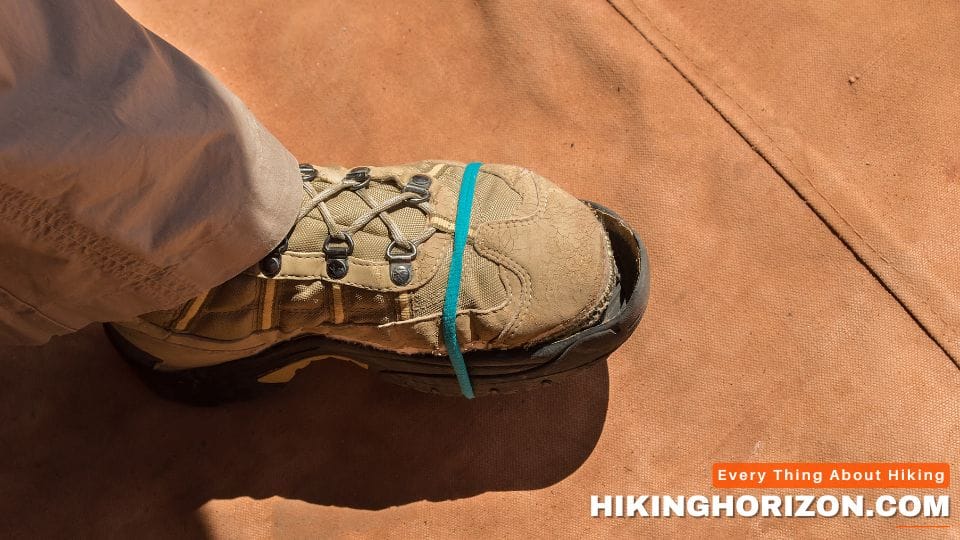
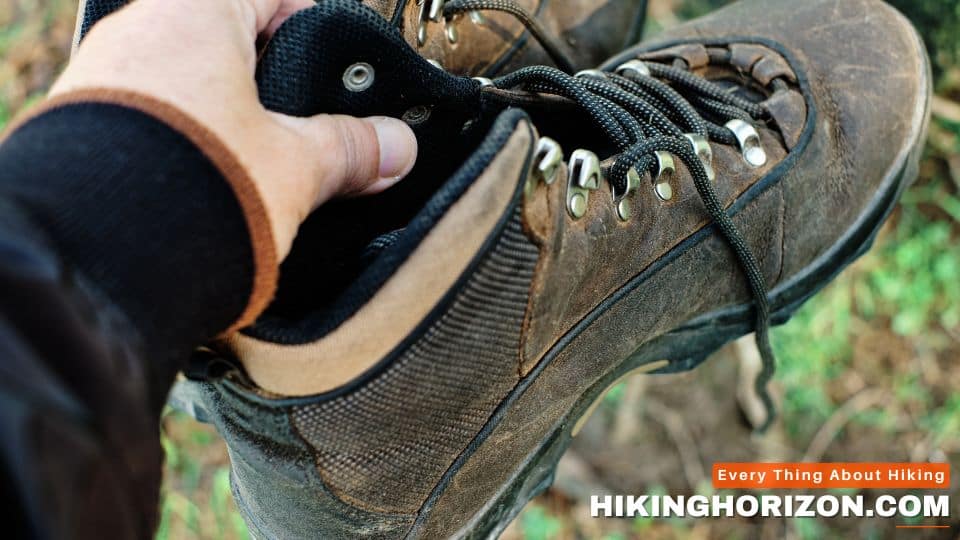
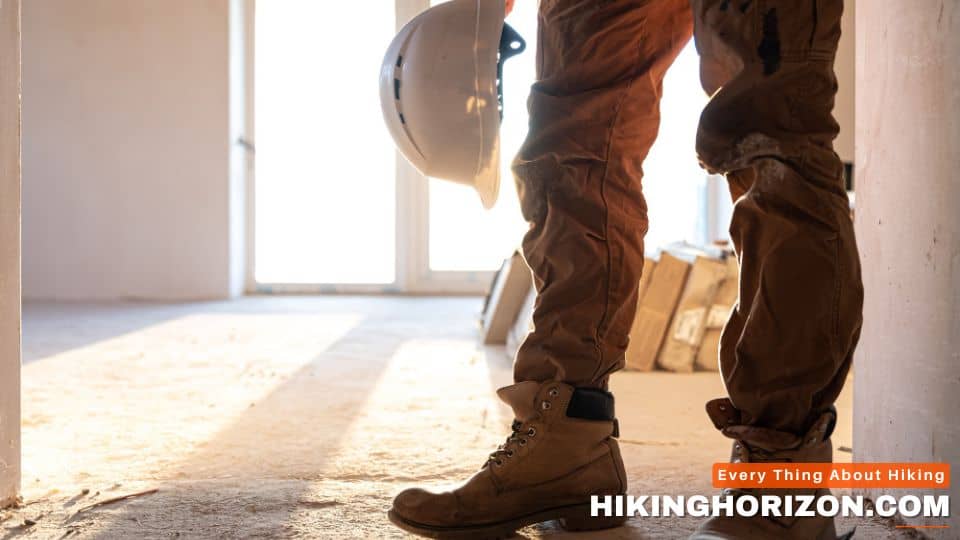
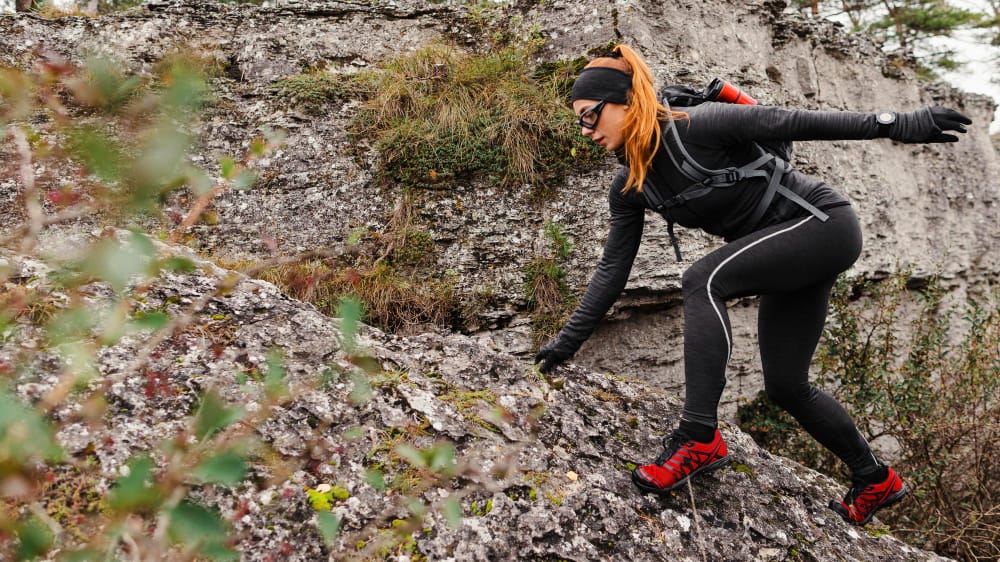
Pingback: Is Hiking in the Rain Safe? Uncover the Truth!